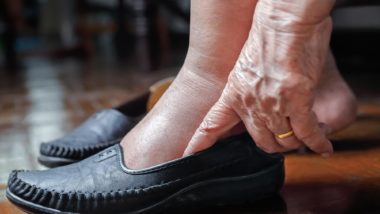Top Class Actions’s website and social media posts use affiliate links. If you make a purchase using such links, we may receive a commission, but it will not result in any additional charges to you. Please review our Affiliate Link Disclosure for more information.

More specifically, patients prescribed SGLT2 inhibitor medications may face an increased risk of developing the flesh eating infection known as Fournier’s gangrene, which is infamous for developing in the genitals. The FDA made a public announcement regarding this alleged correlation on Aug. 29, 2018, after reviewing data from over a five year period that showed SGlT2 inhibitor patients had developed cases of the serious flesh eating infection.
According to the data, SGLT2 inhibitors have been linked to a dozen rare cases of Fournier’s gangrene in a five year period between March 2013 to May 2018. Each of these patients had to be hospitalized and some had to undergo multiple surgeries; the FDA stated at least one patient died from the flesh eating infection.
Fournier’s Gangrene
While Fournier’s gangrene is a risk for patients taking SGLT2 inhibitors, there have only been six reported cases of the flesh eating infection in conjunction with other treatment medications in the past 30 years.
The concern of Fournier’s gangrene is so prevalent with type-2 diabetes drugs that the FDA is now requiring all SGLT2 inhibitor medications to have the flesh eating infection listed as a potential side effect. Drugs that must add the warning to their label include:
- Invokana
- Invokamet/Invokamet XR
- Farxiga
- Xigduo XR
- Qtern
- Jardiance
- Glyxambi
- Synjardy/Synjardy XR
- Steglatro
- Segluromet
- Steglujan
Fournier’s Gangrene and SGLT2 Inhibitor Correlation
Fournier’s gangrene is a type of infection that develops in the perineum, which is the area of skin between the anus and vulva or scrotum. While this is a rare infection, it can be potentially fatal if not properly treated.
This flesh eating infection is more likely to occur in men over women, but the condition needs to be considered if SGLT2 inhibitor patients start experiencing unexplained symptoms related to infection.
It is important to note that like other infections, Fournier’s gangrene can spread to other parts of the body and potentially “involve the entire genital area and even the abdominal wall” said Dr. Amesh Adalja of the Johns Hopkins University Center for Health Security, speaking to SELF.
At this point in time, it is not known why these medications may be causing Fournier’s gangrene in patients but some medical experts have proposed a theory regarding sugar.
SGLT2 inhibitor medications work by preventing the body from absorbing too much sugar by signaling the kidneys to expel excess glucose through urination. This means the majority of the body’s sugar goes the patient’s genital area, which increases the chances of bacterial infection.
SELF says that according to Jamie Alan, assistant professor of pharmacology and toxicology at Michigan State University, sugar is one of the favorite foods of bacteria so they gather where there is a concentrated amount in the body. However, the bacteria only becomes problematic if it finds a way inside the body through a small cut or similar access point.
At this point, the FDA is telling SGLT2 inhibitor patients to closely monitor their health and seek medical attention if they develop any unusual swelling, itching or irritation in the genital area or have a fever.
Prescribing physicians who are concerned about the flesh eating infection occurring in their patients should consider prescribing alternative treatment medications. Professor Alan also suggests that patients practice good hygiene habits to further minimize the risk.
Join a Free Diabetes Medications & Flesh-Eating Infection Lawsuit Investigation
The type-2 diabetes medications linked to the flesh-eating infection include:
- Invokana
- Invokamet/Invokamet XR
- Farxiga
- Xigduo XR
- Qtern
- Jardiance
- Glyxambi
- Synjardy/Synjardy XR
- Steglato
- Segluromet
- Steglujan
If you or a loved one took one of the type-2 diabetes medications listed above and suffered from a flesh-eating genital infection, you may qualify to join this diabetes medication lawsuit investigation. Fill out the FREE form on this page for more information.
ATTORNEY ADVERTISING
Top Class Actions is a Proud Member of the American Bar Association
LEGAL INFORMATION IS NOT LEGAL ADVICE
Top Class Actions Legal Statement
©2008 – 2024 Top Class Actions® LLC
Various Trademarks held by their respective owners
This website is not intended for viewing or usage by European Union citizens.
Get Help – It’s Free
Join a Free Diabetes Medications & Flesh-Eating Infection Lawsuit Investigation
If you qualify, an attorney will contact you to discuss the details of your potential case at no charge to you.
PLEASE NOTE: If you want to participate in this investigation, it is imperative that you reply to the law firm if they call or email you. Failing to do so may result in you not getting signed up as a client or getting you dropped as a client.
E-mail any problems with this form to:
Questions@TopClassActions.com.
Oops! We could not locate your form.












